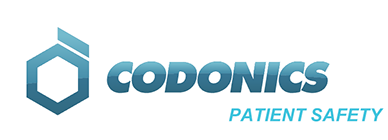BCMA on the Floor
Overview
Bar Code Medication Administration (on the floors)
Bar code medication administration (BCMA) systems are electronic scanning systems that intercept medication errors at the point of administration. When BCMA is used on the floors, a nurse scans a barcode on the patient’s wristband at the bedside prior to administration to first confirm that the patient is the right patient. Then, the nurse scans the barcode on the medication and to ensure the right medication at the right dose is given at the right time by the right route to the right patient, carrying out the “Five Rights of Medication Administration” to ensure patient safety.
BCMA is typically used with electronic medication administration record (eMAR) systems. An eMAR communicates with the BCMA and automatically documents the administration into a patient’s electronic health record (EHR). This enables the medication administration to be captured much more efficiently –and safely– than a manual documentation process.

Medication Errors and the Importance of BCMA
Medication errors often have tragic consequences for patients. According to the 1999 Institute of Medicine’s report, To Err is Human, medication errors alone contribute to 7,000 deaths each year.1 Despite clinicians’ best efforts, over 40% of serious and life-threatening adverse drug events (ADEs), found to occur during ordering, administration, transcription and dispensing, are preventable. Over 30% of these errors are committed at the point of administration.2
Why mistakes can happen
You’ve probably seen it happen on the floors: clinicians with prepared but unlabeled syringes in their lab coat pocket; two or more unlabeled syringes containing the same color liquid side-by-side in the prep area, or a vial or ampoule taped around a prepared syringe. Securing the vial to the syringe might help to identify the contents of the syringe (and, albeit, enables the barcode on the vial to be scanned for BCMA at the bedside) but lacks TJC requirements such as who prepared it, when it was prepared, whether it was diluted, what the diluted value is, and when it expires. Hasty shortcuts such as these are vulnerabilities to human error and contribute to the staggering statistics associated with medication errors. But, in order for BCMA to work, you must first have the “B” – the barcode.
Safe Label System uses barcode technology
No matter who your EHR provider is, such as Epic, Cerner, Allscripts, Siemens, Meditech, McKesson, etc., syringes prepared and labeled using Codonics Safe Label System (SLS) integrate at the bedside with BCMA to provide the highest level of patient safety while simplifying the workflow. SLS is the first and only solution that produces a Joint Commission-compliant syringe label that includes a 2D barcode, making it an ideal solution for BCMA use on the floors.
“The most useful thing the nurses are finding with Safe Label System on the floor is the ease of labeling medications before they administer them through BCMA. It takes the focus off of preparing the medication at the bedside and enables them to focus on administration at the bedside to increase patient safety.”
–Christina Barnes, PharmD, Director of Pharmacy Services, Avita Health System
About Safe Label System
When a clinician scans a vial or ampoule on Safe Label System, a visual and audible confirmation of the drug in hand is provided, a safety check acting as a “second set of eyes”. This ensures that the medication the clinician selected is indeed the intended medication, helping to reduce vial and ampoule swaps. The system then automatically presents a TJC-compliant label that includes the drug name, concentration, dilution and diluent (if applicable), time of preparation, time of expiration, the preparer’s initials, any warnings about the drug, and a 2D barcode that is ready to apply to the syringe, helping to reduce illegible labels and label swaps. The barcode printed on the syringe label can then be scanned prior to administration as part of the Five Rights, and enables electronic documentation at the bedside into the patient record.
1 Kohn LT, Corrigan JM, Donaldson MS. To Err is Human: Building a Safer Health System. Committee on Health Care in America. Institute of Medicine 1999.
2 Bates DW, Cullen DJ, Laird N, et al. Incidence of Adverse Drug Events and Potential Adverse Drug Events: Implications for Prevention. JAMA 1995; 274(1):29-34.
